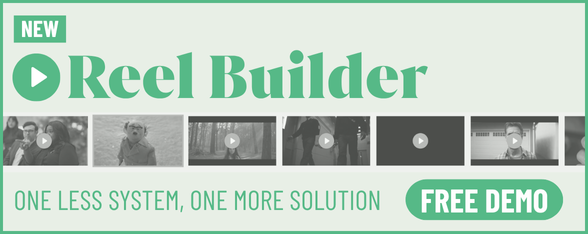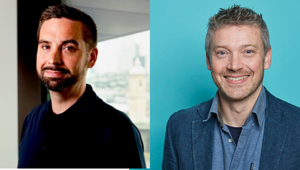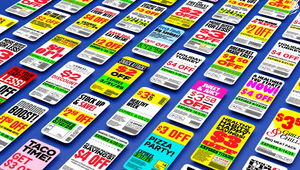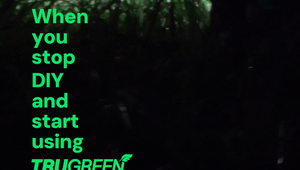
“It’s Not a Race, It’s an Obstacle Course”: The Reunited CCOs Navigating a New Era for VML New York

VMLY&R and Wunderman Thompson’s merger in 2024 not only brought two advertising institutions together, but for some of the leaders in New York, it was a fortuitous reunion.
Wayne Best was CCO at VMLY&R in New York when, all of a sudden, he ‘inherited two of his favourite people’ as the new VML was formed: his former McCann colleague, Tom Murphy - now North American CCO of VML – and his current co-CCO of VML New York, Rosie Bardales.
It’s this latter connection between Wayne and Rosie – the New York CCOs brought back together after 25 years apart – that’s helped breathe a fresh creative-first philosophy and clear, collaborative vision into the agency’s new beginning.
Wayne and Rosie’s creative journeys, while varied, can be traced back to the same point – a formative few years together at creative agency Cliff Freeman & Partners in the late ‘90s. “People that worked there at the time all came from a very similar mindset: creativity comes first,” says Rosie. “That was instilled in our cores; it’s where we started and it flew from there… We were really small but punchy.”
“And a lot of people from that crew went on to do great things too,” adds Wayne.
The pair’s paths then diverged, with Wayne passing through the doors of Wieden+Kennedy, Fallon, Taxi, McCann and more in the States, while Rosie went on an international tour of agencies; Mother in London and Buenos Aires, BBH in London, Wieden+Kennedy in Amsterdam and BETC in Paris, before returning to New York as Wunderman Thompson’s CCO in 2023.
Now co-leading creative at VML New York, Wayne shares that their creativity-first mindset is more important than ever, especially as agencies have grown larger and widened their remit beyond the creative niches they used to occupy, like Cliff Freeman’s reputation for comedic work.
“We have to be all things,” they say almost in unison.
“You’ve got all the different deliverables that you didn't have back when we last worked together, so you have a lot more skill sets in the agency,” Wayne continues. “It’s amazing because you can do bigger things… But throw in the management complexities, AI, etc. and there are a lot of things happening.”
“But the end point is still the same!” Rosie interjects. “What makes great work is one idea, and then how we galvanise our people and the global network [around that].”
“There's more pressure on the creative now, because there's more clutter,” adds Wayne. “To break through the clutter and engage with consumers, you need to be more galvanised behind a really strong creative idea.”
He also says that stewarding a strong idea through increasingly complex client organisations, with growing internal marketing teams, has become harder than ever. “It’s not a race, it’s an obstacle course.”
This is a far cry from Wayne’s earliest adland memories of Ammirati & Puris’ founder Ralph Ammirati refusing to create an ad for a client’s shoe, deeming it ‘stupid’ and prompting the company to discontinue it entirely. “You were presenting to CEOs, and occasionally there’d be somebody in charge of the marketing, but there weren’t full blown marketing departments internally at clients who also knew their stuff.”
Having observed this shift around the world, Rosie explains that this idea of a Don Draper-style ‘beautiful sell’ to a client – which they both experienced in the ‘90s – has been replaced by a need to ‘partner’ with clients instead. “It’s not us romancing a client, it’s getting excited about what we’re getting into together… You can’t talk at people anymore, you have to be in it together.”
Transparency and clear communication serve as the bedrock for this new dynamic, but above all, the CCOs agree that clients are looking for creative that solves problems. “And you can't solve problems that you don't understand,” says Wayne. “You need to get further into their company and understand what they're grappling with, not just with consumers, but also the internal politics.”
Inversely, giving the client deeper insights into creative choices can also help partners on the brand side to ‘sell’ the idea further up the chain of command: CMO to CEO. “When you can get your client team excited, it goes up,” says Rosie, emphasising that “big ideas and creativity” is an infectious unlock for client relations – a tool that invites brand leaders to get more invested in a project.
“You're always trying to solve the problem, to get to something that is culturally connected,” she says. “We're not doing it to get to ‘creativity’. We're doing it to get to the best solution.”
At VML New York, this approach starts right from the pitch process, spearheaded by an ‘all-inclusive trifecta’ of CX (customer experience), BX (brand experience), and creative. This, says Rosie, is all in service of presenting a “full programme” with a go-to-market plan ‘beyond creative for creative’s sake’.
“The difference [at VML] is that we actually operate that way; all disciplines have one P&L,” Wayne explains. “At the end of the day, agencies all do similar things but the difference is the talent you attract and the culture you create… The trick is to create a culture where there's no fear of saying something wrong, where people can throw things out that maybe don't seem right, but might lead to something right.
“Being collaborative means letting go of your ego,” he continues. “And especially when you're looking across disciplines like CX, BX and commerce, if you take your ego out of it, you're going to accomplish much more.”
Having now been reunited and leading VML New York for a year-and-a-half, Rosie and Wayne are confident in the “very clear vision” of the agency.
“It’s to be the best creative agency that we can, and that means everyone being able to do their best,” says Rosie. “It's harder with this many people and this many clients, but it all comes down to the fact that when you do great work, it's infectious. The company gains that spirit, swagger, mentality – whatever you want to call it – and you just create. It gives people license to do whatever they want to do.”
“It’s going into everything a little open-minded, too,” says Wayne. “Really listening and understanding what the challenge is, and working backwards from that. We have all these different disciplines and capabilities that allow us to assess a problem and then build the right team around it. A lot of agencies are either a little too siloed to do that, or they don't have the capabilities.
“At the end of the day, it's all figuring it out,” he adds. “How do you merge creative departments? How do we work together? Which meetings duplicate each other and which add value? Those are all things you just keep figuring out and getting smarter and smarter.”















